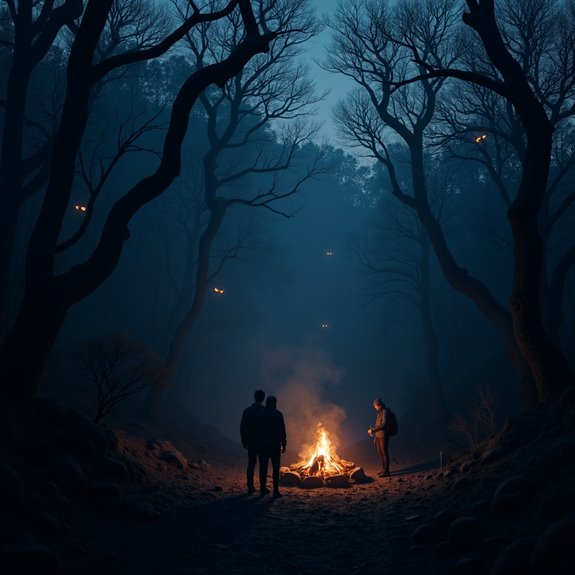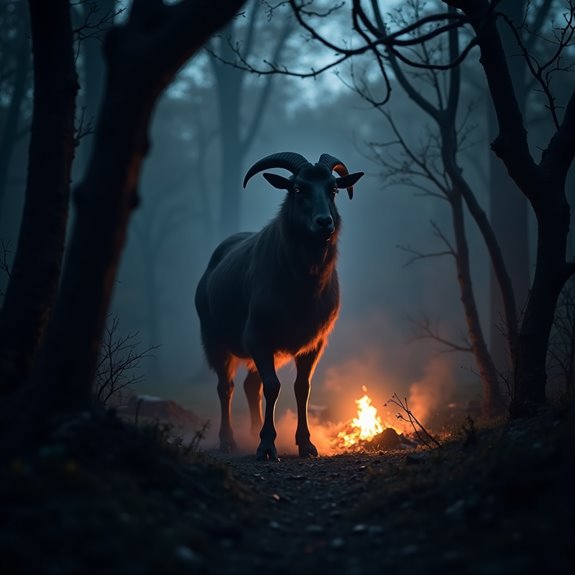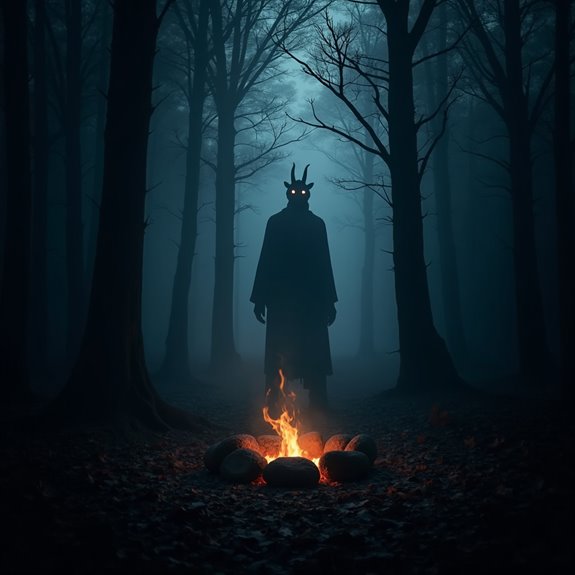Was Goatman More Than a Campfire Story?
The Goatman legend captivates many, interwoven with layers of fear and societal anxieties. Far from just a campfire story, its numerous sightings across states spark curiosity and skepticism alike. This cryptid resonates deeply, embodying cautionary tales of the unknown lurking in the wilderness. Questions linger about the origins of these sightings and what they reveal about human nature. What secrets does the Goatman hold, and why does it continue to haunt our collective imagination?
Introduction

As the campfire crackles and shadows dance in the flickering light, stories of the Goatman emerge, enchanting listeners with a mix of fear and fascination. This cryptid, often described as a half-goat, half-human creature, haunts the imaginations of those gathered around the fire. Legends vary by region, but the common thread weaves through tales of unsettling encounters and eerie sounds echoing through the woods. With its roots deep in folklore, the Goatman serves as a cautionary symbol, warning against wandering too far into the wilderness. As night falls and the flames diminish, whispers about this elusive creature stir unease, prompting everyone to question whether it’s just a campfire story or something more sinister lurking in the shadows.
Legend of Urban Folklore

Legends of the Goatman often blur the lines between rural folklore and urban myth, capturing the imaginations of both city dwellers and country folk alike. This enigmatic creature, described as a half-goat, half-man being, sparks intrigue across various cultures. Many believe it embodies local fears and societal anxieties, adapting its narrative to fit different environments. In urban settings, tales of the Goatman serve as cautionary stories, warning against the dangers lurking in abandoned areas. Meanwhile, in the countryside, these legends often emphasize the importance of respecting nature and its mysteries. As the Goatman legend evolves, it weaves itself into the fabric of contemporary storytelling, embodying a unique blend of humor, horror, and morality, offering a mirror to society’s own complexities.
Notable Cases or Sightings

While many dismiss Goatman sightings as mere urban legends, several accounts have emerged that demand attention. In 1971, witnesses in Maryland reported seeing a creature resembling a human-goat hybrid, darting between trees near a local park. Later, in 2001, a group of campers in Texas claimed they were stalked by a tall, goat-like figure that emitted strange sounds at night. More recently, in 2019, a couple hiking in Kentucky captured unsettling footage of a creature with horns roaming their campsite. Each of these encounters adds to the lore, capturing the imaginations of cryptid enthusiasts. As these sightings continue to surface, the curiosity surrounding Goatman only intensifies, leaving many to wonder what really lurks in the forests.
Common Theories or Explanations
Many enthusiasts and skeptics alike have proposed various theories to explain the Goatman phenomenon. Some suggest it’s an undiscovered species, a hybrid between human and goat. This idea often stems from folklore about shape-shifting creatures, hinting at a historical connection to local myths. Others believe the sightings can be attributed to misidentified wildlife, such as deer or large farm animals. Psychological explanations also arise, suggesting that fear and suggestion distort perceptions, especially in dimly lit areas. Additionally, some theorists argue the Goatman embodies societal anxieties or serves as a cautionary tale, stoking the imagination of those gathered around campfires. Each perspective adds layers to the Goatman legend, blurring the line between reality and myth.
Frequently Asked Questions
How Did the Goatman Legend Originate?
The Goatman legend originated from various folk tales and local cultures, merging sightings of a half-goat, half-human creature. Over time, these stories evolved, fueled by imagination, fear, and the desire for thrilling campfire narratives.
Are There Any Scientific Studies on Goatman Sightings?
There haven’t been any rigorous scientific studies on Goatman sightings. Researchers often dismiss such accounts as folklore, focusing instead on psychological and cultural explanations for the persistence of the legend in various communities.
What Cultural Impact Has Goatman Had?
Goatman’s folklore captivated local communities, inspiring tales, artwork, and even events. People shared stories around campfires, fostering a sense of connection. His legend reflected fears and curiosities, deeply influencing regional culture and myth-making traditions.
Have There Been Any Hoaxes Related to Goatman Stories?
Many local legends about Goatman have sparked hoaxes over the years. People claimed to capture evidence of the creature, posting images online, which often turned out to be fabricated, igniting debates and fueling local folklore.
What Is the Psychological Appeal of Urban Legends Like Goatman?
Urban legends like Goatman captivate people because they blend fear with fascination. They create a thrill, tapping into primal fears and curiosity, fostering a sense of community as individuals share and explore these chilling tales together.


